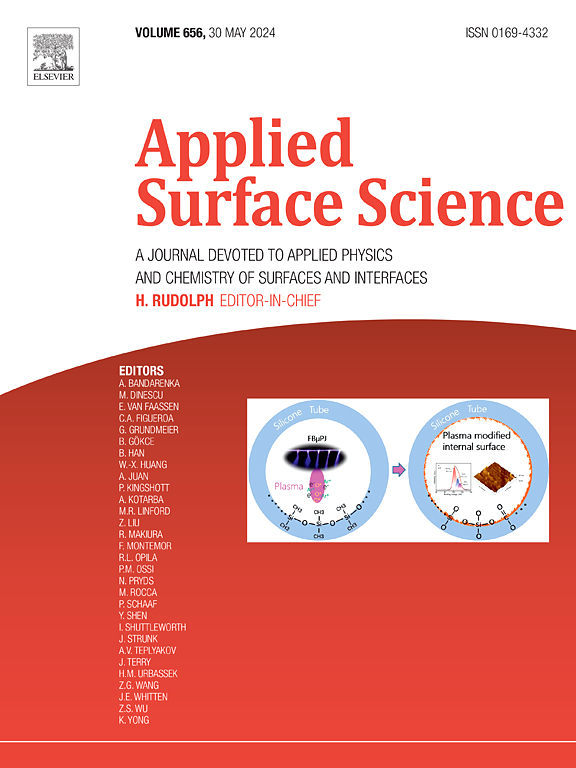氩气簇轰击下固体表面溅射的建模:与实验和模拟数据的比较
IF 6.3
2区 材料科学
Q2 CHEMISTRY, PHYSICAL
引用次数: 0
摘要
氩气簇溅射产量是表面分析和修饰的基本工具,有助于精确的材料表征和先进的工程应用。Seah的普适方程为氩星团溅射的建模提供了坚实的基础;然而,其实际应用依赖于三个未知参数A, q, B的确定,这三个未知参数是拟合参数。为了克服这一困难,提出了固体金属和有机表面在氩气团簇影响下的溅射模型。它代表了Bengeurba模型[1]的扩展,[1]最初是为快速金属团簇撞击下的溅射而开发的。事实上,它在氩气团簇上的应用揭示了低能量溅射成品率的局限性。这种限制可能是由于氩气团簇明显的破碎动力学和较低的结合能,这明显改变了能量沉积溅射机制。为了解释金属团簇和非金属团簇撞击之间的差异,假设在撞击表面时产生的冲击条件下,在向内传播到压缩区域的稀薄波的作用下发生物质喷射或溅射。分析表明,团簇的大小和团簇与靶材的质量比对溅射成品率有显著影响。此外,扩展模型已通过实验和分子动力学模拟数据进行验证,应用于金属和有机材料,显示出良好的一致性。通过将理论预测与实验观察和MD模拟相结合,这项工作为氩气团簇诱导溅射现象提供了有价值的见解。本文章由计算机程序翻译,如有差异,请以英文原文为准。

Modeling of sputtering from solid surfaces under Argon cluster bombardments: comparison with experimental and simulated data
Argon gas cluster sputtering yields serve as a fundamental tool in surface analysis and modification, facilitating precise material characterization and advanced engineering applications. Seah’s universal equation provides a solid foundation for modeling sputtering by Argon cluster; however, its practical application relies on the determination of the three unknown parameters A, q, and B, which are fitting parameters. To overcome this difficulty, a model for sputtering from solid metallic and organic surfaces under Argon cluster impacts is proposed. It represents an extension to Bengeurba‘s model [1] originally developed for sputtering under rapid metallic cluster impacts. Indeed, its application to Argon cluster has revealed a limitation to sputtering yield at low energy. This limitation may arise from the distinct fragmentation dynamics and lower binding energy of Argon clusters, which significantly alter energy deposition sputtering mechanisms. To account for the difference between metallic and non-metallic clusters impact, it is assumed that within the shock conditions generated at the impact on the surface, material ejection or sputtering takes place under the action of a rarefaction wave which propagates inward into the compressed region. The analysis reveals that both the size of the cluster and the mass ratio between the cluster and the target significantly influence on sputtering yield. Additionally, the extended model has been validated using experimental and molecular dynamics simulations data, applied to both metallic and organic material showing excellent agreement. By bridging theoretical predictions with experimental observations and MD simulations, this work provides valuable insights into Argon cluster-induced sputtering phenomena.
求助全文
通过发布文献求助,成功后即可免费获取论文全文。
去求助
来源期刊

Applied Surface Science
工程技术-材料科学:膜
CiteScore
12.50
自引率
7.50%
发文量
3393
审稿时长
67 days
期刊介绍:
Applied Surface Science covers topics contributing to a better understanding of surfaces, interfaces, nanostructures and their applications. The journal is concerned with scientific research on the atomic and molecular level of material properties determined with specific surface analytical techniques and/or computational methods, as well as the processing of such structures.
 求助内容:
求助内容: 应助结果提醒方式:
应助结果提醒方式:


